I need to wire 5 led's in series with a switch and variable resistor to control brightness.
I think the circuit will need to look something like this (Ignoring the values the editor added!) but it's been a very long time since I've done anything like this.

simulate this circuit – Schematic created using CircuitLab
I don't know how to calculate how much battery power will be required, or if it will need additional resistence.
How do you go about solving these kinds of equations?